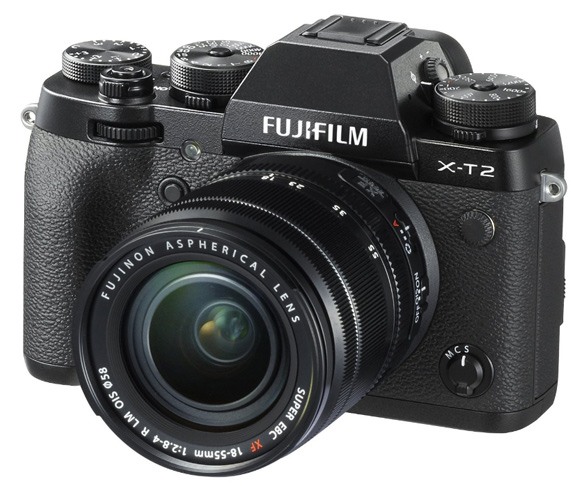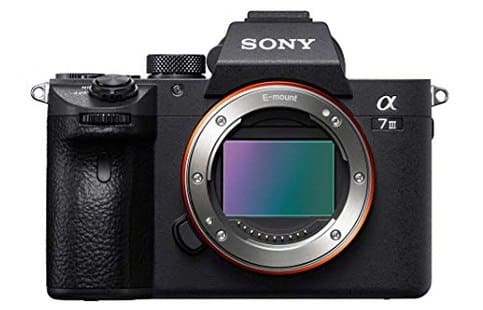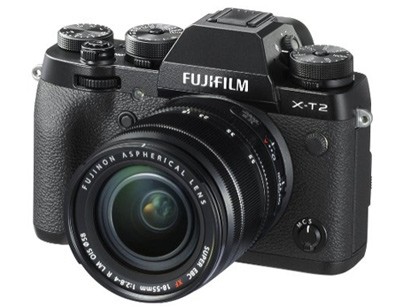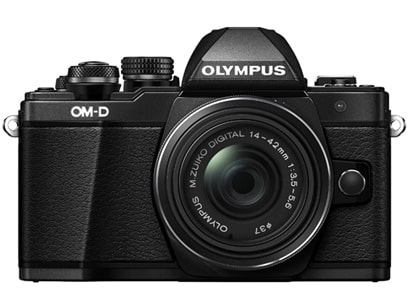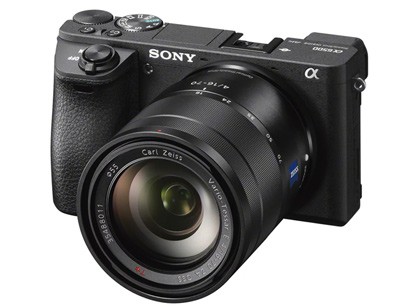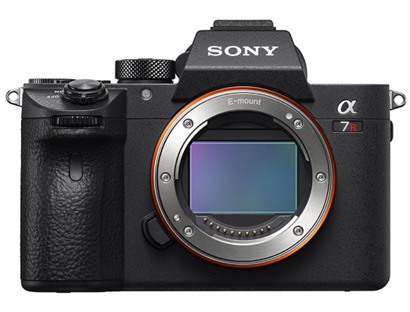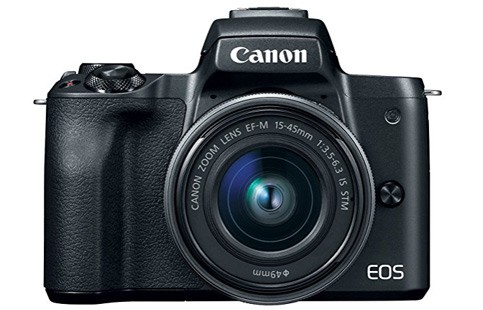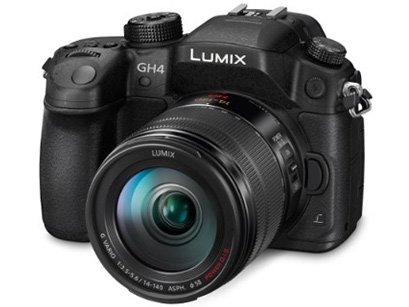Selecting a Mirrorless Camera for Portrait Photography
Mirrorless cameras are an excellent choice for portrait photography. They’re small and compact, but packed with features that you normally find in bigger, bulkier DSLR cameras.
In this portrait photography camera guide, you will see what specifications matter the most when choosing the right camera, and of course the 8 best mirrorless cameras suited for portraits. We looked at every model available, which includes brands such as Sony, Olympus, Fujifilm and more.
Whether you are a complete beginner or a professional user, the cameras on our list go from $500, all up to $3000. You will definitely find a model that suits you, especially because all cameras today are so good.
What Camera Gear Will Help Improve My Portrait Photography?
Before we get into the list of the best Mirrorless cameras for portrait photography let’s talk a little bit about what can help improve your images. First and for most it’s not gear at all, it’s experience and understanding of your camera settings.
The great thing about experience is you can learn from others to speed up the process. So you can find tips on things to try with your portraits to help you see things you weren’t aware of before.
Then having a better understanding of your camera setting is critical. You could have the most expensive camera ever made, but if you don’t know how to work it you’re not using it’s full value.
Okay, now for the gear part. By far the most important gear is going to be a good lens. Selecting the right lens for what you shoot is more than we can get into here so we’ve got lens guides for you on all the major camera brands. As well as a lists of all the different lenses available if you’re looking for a complete lens list.
If you are familiar with the latest camera news you may ask why some of the newest mirrorless cameras aren’t included in our list yet. In some cases that may be that they are so new that they haven’t really been proven in the real world photographer’s hands. Then in other cases it may be the lens system for the camera is lacking.
As Mirrorless cameras are increasing in popularity more companies are designing mirrorless lenses, but some aren’t quite there yet. They may have a couple really great lenses but we’re not quite ready to add them here, until their lens system grows a bit. If you have questions about a specific camera feel free to ask us.
Best Mirrorless Cameras for Portrait Photography
- Sony A7 III
- Fujifilm X-T2
- Olympus OM-D E-M10 III
- Fujifilm X-T20
- Sony A6500
- Sony A7R III
- Canon M50
- Panasonic G85
If you decide to buy anything after clicking on our Amazon links, you automatically support us. It’s what allows us to write guides such as this one.
What’s Important for Portrait Photography?
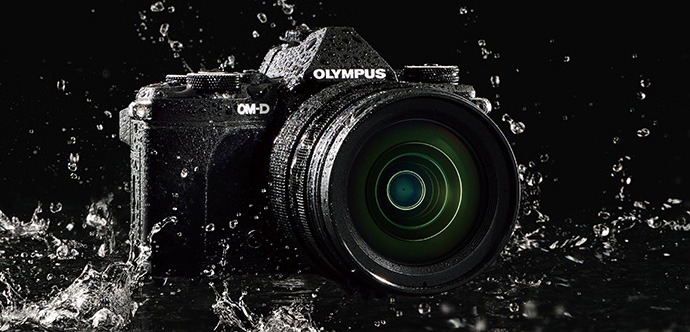
Weight & Size – Mirrorless cameras are compact, thus perfect for photographing on the go. Because they have no mirror on the inside (hence their name), this allows them to be much lighter and smaller than DSLR cameras, while still keeping the same advantages that makes them better than regular cameras; bigger sensor, faster auto focus and so on.
Frames per Second – Generally speaking, frames per second don’t matter that much for portrait photography. Almost every camera today can shoot over 4-5fps, and unless you’re doing some studio work, you won’t need anything quicker. However, if you are shooting in low light and your pictures aren’t as sharp as you would like them to be, a neat little trick is to simply take a few shots in burst mode because one will be sharper than the rest.
Megapixels – The higher the resolution, the more details will be visible when cropping or printing large. If your photographs will mostly be displayed online, you don’t have to worry too much as all cameras today have more than enough megapixels, but for extremely large prints, stick to 20MP+. Again, 20MP+ is almost a standard for every model out today.
Low Light – For indoor or low light photography, you want a camera with good high ISO performance. We still recommend getting a lens with a big aperture to let in as much light as possible, but if you still have to raise the ISO speed, then you need to understand the difference between sensors. Full frame sensors generally display the least amount of noise, but this also depends on a specific model and how many megapixels it has. In most cases, a 24MP full frame sensor should show noticeably less noise than a 24MP micro four thirds sensor, simply because of individual pixel size. Bigger pixels = better low light performance.
Sensor Size – We have 3 different types of sensors in mirrorless cameras. The first, biggest, are Full Frame sensors. Second are APS-C, while the smallest ones are called Micro Four Thirds. While you don’t have to worry too much about this, it helps knowing that there’s this thing called crop factor. If you put a 100mm lens on a full frame (FF) camera, the field of view stays the same. If you put that same 100mm lens on an APS-C camera that has a 1.5x crop factor, it now suddenly appears much longer; it’s identical to a 150mm lens on a FF camera (100mm x 1.5 = 150mm). Micro Four Thirds sensors are even smaller, and therefore have a 2x crop factor, literally doubling your focal length equivalent. Nothing happens to your camera, lens or image quality, it’s simply due to the difference in sensor size.
If you’re confused, just remember:
- 1. Full Frame Sensor (Sony only = no crop factor)
- 2. APS-C Sensor (Sony, Canon and Fujifilm = multiply the lens number by 1.5x)
- 3. MFT Sensor (Olympus and Panasonic = multiply the lens number by 2x)
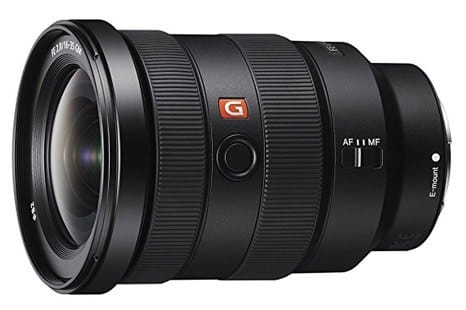
Lenses – A good camera is one thing, but having the right lenses can make the difference between a great shot, and an average shot. Lenses for portrait photography are usually in the 35 to 120mm range, so anything between will make your subject’s face appear natural and flat. Go too wide or long, and you can distort their faces, especially if they are not in the center of the image.
Image Stabilization – Many cameras have built-in image stabilization, so even if the lens you use doesn’t have it built-in, your images will still be stabilized thanks to the camera. Image Stabilization will only work on subjects that are not moving! It only helps if you are not completely stable, or if you are shooting with very slow shutter speeds. To put it simply, unless your camera is on a tripod, you are almost always slightly moving. This is why there is no downside to having IS.
Video Recording – Nowadays, more and more models come with 4K recording. If this is important to you, most of our recommended models come with it, but if Full HD is enough, then you’ll be glad to know that every single model on the market can do it. You’re not sacrificing image quality by going with a camera that has good video performance, so no need to worry about that.
Weather-proof – It helps if the camera is environmentally sealed, in case you’ll find yourself in difficult to shoot terrain (sand, rain, ice, dust etc.). This is usually reserved for more expensive cameras (over $1,000), and even if your camera won’t have it, it doesn’t mean a single drop of rain will harm it. You’ll just have to be more careful.
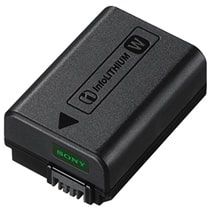
Battery Life – Seeing as mirrorless cameras use a lot more power, their battery life isn’t as long as with DSLRs. Still, while the majority state they last up to ~350 shots, you can expect twice as long life in actual use. We seriously recommend you to buy 2 or even more backup batteries, especially if you plan on traveling for days/weeks.
Sony A7 III
The Sony A7 III is a fantastic deal for the price. It’s like you took the best from every Sony full frame camera and put it in an affordable body.
Just like the more expensive A9, the Sony A7 III has a 24MP sensor and a whopping 693 AF point system. These two features together make the camera perfect for any imaginable scenario; portraits, studio, extreme sports and of course casual daily photography. The dynamic range, colors and detail of the A7 III’s sensor are excellent for the price.
It can shoot 10 frames per second, which is more than enough if you’re looking for a portrait/wedding/concert camera. The buffer size is also respectable, with 177 JPEG shots and 89 RAW. You can take pictures for almost 17 seconds before the buffer fills, so make sure you get yourself some good memory cards. The A7 III has 2 x SD slots, the first one supports UHS-II speeds. You can see our A7 III card guide here.
Just like its more expensive siblings, it features a 5.5 axis built-in stabilization that you can always count on, a 4K video recording mode at 30p and ISO range up to 204,800. For low light/indoor shooting or just no-flash photography, it’s high ISO performance is very well handled.
If you want to record videos, you’ll be happy to know that the A7 III can comfortably record 4K (1.2x crop) at 30fps and 1080p at 120fps. Because of the new image processor, videos shot at higher ISO should look better now. One excellent addition is the touch screen capability that allows you to focus/operate the camera simply by pressing anywhere on the screen. This is slowly becoming a standard for all cameras, regardless of their price.
For transferring images, the Sony A7R III finally has a USB 3.0 port. When a camera has 42MP, the files it creates are huge, so you’ll really want fast transferring in this case. Speaking about files, it now features 2 x SD memory card slots (one supports UHS-II speeds). To top it of, you’ve also got an AF joystick on the back of the camera so you can choose your focus point/group quicker, while the battery lasts up to 650 shots compared to 390.
To sum up, the A7R III is not the cheapest camera, but if you’re looking for the absolute best in almost every department, you will love it, especially if high megapixel count is important.
Why is it good for portraits?
It’s got the perfect mix of features and low price, especially for a full frame camera. It’s the ideal travel camera that can also be used professionally for any scenario imaginable. As we mentioned, whether it’s concerts, weddings, studio portraits, landscape or even sports, you can count on it. Make sure to check out our best lenses for the A7 III.
Then there’s the built-in stabilization up to 5.5 stops (1 better than A9), 4K video recording, 2 x SD card slots, USB 3.0 port for quickly transferring those big files, and a 710 shots battery life.
You can buy it at Amazon or see more reviews here.
Fujifilm X-T2
The Fujifilm X-T2 is our favorite mirrorless camera from Fuji.
Released in 2016 and replacing the famous X-T1, it sure does bring a lot of exciting improvements. While the X-T1 is still an awesome camera with great quality, the newer model is faster and better at pretty much everything.
First, the resolution got a big increase, from 16 to 24MP. If you mostly share your photographs online, then the extra 8MP won’t really make a big difference. However, for cropping, printing large and still retaining plenty of details, extra 8 million pixels is a ton more information. Again, this is subjective and depends on where your photographs are displayed.
Image quality is absolutely fantastic. Colors and contrast look wonderful and you’ll love shooting in JPEG. Dynamic range is also really impressive for an APS-C camera, so hats off to Fuji. Pair the camera with any of the great Fuji’s X lenses and you’ve got a great combination for just about anything, from portraits, events, to street and sports photography.
Sports? Yes, if the X-T1’s AF performance was not that good to you, the new X-T2 definitely delivers. It boasts a 325 AF point system, with 169 of those phase-detection for improved speed. The body even has an AF point selection joystick to focus on the point you want quicker (similar to more advanced DSLRs). Simply put, the old X-T1’s priority was still images (based on the AF speed). Now, you’ve got that + action photography covered.
The Fujifilm X-T2 has also been improved for video use; it records 4K videos at 24p, has a microphone jack and allows you to choose the F-log profile. Auto focus accuracy and speed during recording are okay, but sometimes you’ll be better off doing it manually.
For storing your files, you had 1 x SD slot on the X-T1. Now, you’ve got 2 x SD slots, and the first one supports UHS-II for faster writing and reading with the latest memory cards. Should you decide to use the USB, it’s now USB 3.0 vs 2.0, something we miss seeing on many newer cameras. For sharing your shots, it’s got the same Wi-Fi functionality but no NFC.
With all the exciting new features that need quite a lot of processing power, the X-T2 still manages to shoot up to 350 shots before the battery empties. That’s only 10 less than on its predecessor. The body size and weight have also increased, but by nothing drastic (from 27.2 oz (771g) to 28.8 oz (817g)). The 3.0″ LCD screen offers the same resolution and no touchscreen, so no improvements here.
Why is it good for portraits?
Fujifilm has always been famous for its look of image quality/look, perfect for portrait photography, street, and other types as well.
The 24MP sensor is very well made, the high ISO performance for an APS-C camera is also very good and the lenses Fujifilm offers are ideal for portraits. You can check out our Fujifilm portrait lens guide here.
Unlike Olympus, Fuji uses APS-C sensors in their cameras so you can expect better high ISO performance. The X-T2 is weather sealed, has 2 x SD card slots with full UHS-II support. It’s very easy to operate and the whole system has a lot of good lenses.
You can buy it at Amazon or see more reviews here.
Olympus OM-D E-M10 III
If you are looking for a small, compact and cheap camera that has plenty of exciting features, the Olympus E-M10 III is our top pick.
It’s the cheapest Olympus OM-D mirrorless model, but this little camera can record 4K videos at 30fps or even HD at 120fps.
Inside, you will find a 16MP sensor, built-in image stabilization, an articulating touch screen LCD, 8.6 frames per second and 121 AF points (compared to 81 on the previous model).
You’re probably thinking you’re losing a lot of features since the Olympus OM-D E-10 III is so cheap. Is that true?
The only negative thing we could find is the same as with its predecessor; there’s no weather sealing. Not a deal breaker since many more expensive cameras don’t offer that either, but we had to point out something. If you’re serious about video recording, you should also know that there is still no external microphone port so you’ll have to spend more if professional audio quality is a must for you.
The Olympus OM-D E-M10 III is a brilliant camera if you want to spend as little as possible, yet still receive all the latest features such as 4K videos, built-in stabilization, 8.6fps and great imaging sensor. It is extremely light and compact so it’s excellent for daily photography, traveling and also other types of photography; from sports, landscape, weddings and so on. Put it in your pocket and go!
Why is it good for portraits?
The Olympus E-M10 III is extremely light and compact, making it an ideal companion for traveling and casual photography. Sometimes carrying too much gear results in you not even using the camera, so if you think that describes you, do consider a small camera system. It can also be used for more “serious” work, it’s just that the size makes it super perfect for the previously mentioned scenarios.
The 16MP sensor is nothing to boast about resolution, but it’s a good choice for any type of photography. Yes, you can still print big and crop, just not as much as with other cameras. Despite its cheap price tag, the Olympus still comes with built-in stabilization, articulating LCD touch screen and even 4K video recording! For around $500, you won’t find anything better.
You can buy it at Amazon or see more reviews here.
Fujifilm X-T20
The Fujifilm X-T20 is very similar to its more expensive brother, the Fujifilm X-T2. We think this one’s a better deal for the price!
They both share the same APS-C image sensor with 24 megapixels, 325 hybrid AF system, 8 frames per second and ISO up to 51,200.
However, you should know that none of the two Fuji models come with built-in stabilization. If you know you won’t need it (because you plan on buying lenses with it), then you can easily save some money like this.
The major differences are; the X-T20 is not weather sealed, has 1 stop slower fastest shutter speed (1/8000 vs 1/4000), a slightly smaller viewfinder, 1 SD memory card instead of 2 and no headphone port. Because of this, the Fujifilm X-T20, which is a great camera, costs a few hundred dollars less. For portraits, the specifications missing aren’t a big deal at all.
It does have a few “advantages” though; the LCD is now touchscreen, the camera weighs noticeably less and it also has a built-in flash. If you’re looking for the best image quality, both cameras deliver the same so you don’t have to worry about anything. Expect beautiful, colorful shots. As far as video goes, these two have the same features and record 4K at 30p.
The X-T20 is really a smaller and cheaper version of the X-T2. Great for any type of photography, whether it’s streets, sports or casual/traveling, the X-T20 is definitely worth the money.
Why is it good for portraits?
If you don’t need weather sealing or built-in stabilization, the X-T20 has your back. It’s just like the X-T2 on the inside, but cheaper since you lose a couple of features (but not sensor performance).
You can buy it at Amazon or see more reviews here.
Sony A6500
The announcement of the Sony A6500 was quite a surprise. We expected the camera of course, but not so soon as it came out only a few months after the A6300 was released.
It uses the same 24.2MP APS-C sensor so image quality, colors, dynamic range and noise are all identical. The amazing 425 phase-detection AF point system is still as fast as ever.
The 3 biggest improvements are:
- 5-Axis Built-in Image Stabilization
- Touch-Screen LCD
- Bigger JPEG and RAW Buffer
The built-in stabilization is a huge advantage, especially if you own lenses that don’t have any. If you use a lens that does have OS then the two work together. For video, telephoto and low light situations, anything that can compensate for your movement is a welcome addition. 5 stops is a difference between shooting at 1/8 instead of 1/250, while still getting a crisp shot. It depends on each situation of course, and it does not freeze a moving subject, only a fast shutter speed does that.
Having a touch-screen LCD monitor (same size and resolution) makes the process of selecting the focus point quicker and easier, especially when recording videos.
Both cameras shoot at 11.1 frames per second, but the Sony A6500’s buffer is bigger. In JPEG mode, you can now take up to 231 instead of 44 shots, and 110 instead of 22 RAW files. All of this thanks to a new LSI chip (it basically handles most operations of the camera). The shutter lag time has also been slightly reduced and the camera turns on 0.1s quicker.
It can record 4K videos at 30/25/24p and even 120fps in Full HD, perfect for slow motion clips. If you’re interested in video capabilities of the new A6500, check out the NoFilmSchool preview. Unfortunately it seems like recording 4K videos for too long still sometimes results in overheating.
We really like the A6500, even though there aren’t many new features added. The ones that are new though, such as 5-axis IS and touch-screen, are super helpful and will result in less blurry photos and videos. It does cost $400 more but it’s worth it.
Why is it good for portraits?
If you want a Sony camera and lenses but don’t want to get the A7 or A9, the A6500 is your best choice. It’s one of the most compact cameras on the market, comparable to the Olympus E-M10 III.
24MP sensor, built-in stabilization, touch screen articulating LCD, 4K videos and superb AF system with 425 AF points. There are quite a few E-mount lenses that are perfect for portrait photography, and an even bigger selection of FF E-mount lenses (bigger and heavier, but they fit and work normally).
You can buy it at Amazon or see more reviews here.
Sony A7R III
The Sony A7R III is a camera that delivers in every department.
First, it’s got a monster 42.2MP sensor, just like its predecessor. However, the A7R III has an improved image processor, which makes this 42 megapixel sensor perform better in low light (maximum ISO of 102,400). With such a high resolution, the entire Sony A7R line continues to be a perfect choice for landscape, studio, commercial and portrait photography.
Second, the A7R III can shoot 10 frames per second. That’s blazing fast, especially for a camera with so many megapixels. Many other models can’t come close, even with less pixels, although this is a benefit of the mirrorless technology. Because of the 10 frames per second, you can use it for sports, action and wildlife, and expect a lot of different shots to choose from.
These 2 improvements alone would be worth the higher price tag, but there are a lot more features to the camera. It’s got 425 vs 399 contrast AF points and focuses a lot faster, especially in low light. The built-in 5-axis image stabilization has been improved and now helps up to 5.5 stops, instead of 4.5. As you can see, the A7R II was great, but the new model is even better.
If you want to record videos, you’ll be happy to know that the A7R III can comfortably record 4K at 30fps and 1080p at 120fps. Because of the new image processor, videos shot at higher ISO should look better now. One excellent addition is the touch screen capability that allows you to focus/operate the camera simply by pressing anywhere on the screen. This is slowly becoming a standard for all cameras, regardless of their price.
For transferring images, the Sony A7R III finally has a USB 3.0 port. When a camera has 42MP, the files it creates are huge, so you’ll really want fast transferring in this case. Speaking about files, it now features 2 x SD memory card slots (one supports UHS-II speeds). To top it of, you’ve also got an AF joystick on the back of the camera so you can choose your focus point/group quicker, while the battery lasts up to 650 shots compared to 390.
To sum up, the A7R III is not the cheapest camera, but if you’re looking for the absolute best in almost every department, you will love it, especially if high megapixel count is important.
Why is it good for portraits?
42 megapixels. That’s mind blowing. If you decide to crop like a mad man or print huge, you will still get beautiful images with plenty of resolution so no one will even know it’s not the original shot. Sometimes, a wide angle lens can be too wide, and you’d like to “zoom” closer to the scene. Having this many pixels is the way to do it without buying a new lens.
Then there’s the built-in stabilization up to 5.5 stops (1 better than A9), 4K video recording, 2 x SD card slots, USB 3.0 port for quickly transferring those big files, and a 650 shots battery life. If you think the A9 is too expensive and don’t want 20fps, but can live with 10fps, save some money and get this camera instead. Sony’s lenses are generally speaking a bit more expensive than what other brands charge, which is the only downside we can think of for this model.
You can buy it at Amazon or see more reviews here.
Canon M50
It’s simply amazing seeing how affordable the Canon M50 is, especially when you compare it to the more expensive M5 that doesn’t even have better features.
Canon definitely hit a winner with this model. As usual, it’s got a 24MP APS-C sensor and sports the newest Digic 8 processor to make all operations much faster. It features Dual Pixel AF technology and 139 AF points. Simply said, DPAF works wonderfully for both photos and videos and is really accurate when it comes to locking on your subject. For something like portraits or photographing people, the accuracy is fantastic.
It’s got a fully articulated LCD screen, 10 frames per second and 4K video recording at 24p. Now, the biggest, and our only complaint about the whole M line is that the lens selection is far from huge. Being fairly new to the mirrorless scene, Canon will have to do a lot of catching up. More and more high quality lenses keep coming, and you can still use an EF adapter to use any of the 80+ Canon EF lenses on it, but as of 2018, there are less than 20 lenses available.
For sharing pictures/videos quickly and easily, the M50 has Wi-Fi, Bluetooth and NFC connections all built-in. Simply connect it to any device and send images; you don’t even need a USB cable. It’s a very compact camera which makes it perfect for travel/daily photography, or portraits on the go.
Why is it good for portraits?
You get a lot of stuff for the price, and if you want to use your existing EF lenses with an adapter, you will like the compact size and the quality it delivers. It’s a fine camera, you just don’t have as many native lenses to choose from as you do with other brands. We are sure Canon will step up in this department, especially because both Canon and Nikon recently released their full frame mirrorless models.
You can buy it at Amazon or see more reviews here.
Panasonic G85
The Panasonic G85 is not as popular as the rest of the cameras on this list, but is still ideal for the money.
Inside, we find the same 16.1MP sensor as in the older GH4. You’ve got sensor-shift image stabilization that helps up to 5 stops, 4K video recording, a touch screen enabled 3.0″ articulating LCD and environmental sealing. Seeing as the G85 costs less than $1000, this weather sealing addition is great if you’re looking for a camera to use in tougher conditions.
Seeing as this is a “cheaper” version of the new GH5, what do you lose? Well, you’ve still got 4K video recording, just not with as many additional features. Most people who aren’t serious about videos won’t miss them, so as long as you’re looking to get good 4K footage straight out the camera, the Panasonic G85 is absolutely fine.
The number of focus points is much smaller, with 49 vs 225. It can shoot slightly slower, 9fps vs 12fps, but anything over 7 is excellent for wildlife and sports. Both of these advantages aren’t really “bad” or anything, it’s just that the GH5 offers that much more for the money. You won’t feel limited by them.
Panasonic G85 is perfect if you’re looking for an advanced mirrorless camera that doesn’t weigh too much, offers exciting features such as 4K videos, built-in stabilization, 9fps and touch screen, but doesn’t cost nearly as much as the GH5.
Why is it good for travel?
This is another one of those “compact 4K cameras” we’ve been seeing lately. On the inside, the G85 resembles much of the previous GH4. A 16MP sensor, stabilization up to 5 stops, an articulating LCD screen and 4K video recording.
Why should you get it? If you prefer its size and weight and want to stick to Panasonic. It’s not one of the go-to landscape cameras you’ll mostly hear about, but it does offer plenty for the price.
You can buy it at Amazon or see more reviews here.
Recap of the Best Mirrorless Cameras for Portrait Photography
Again, we are confident you will find a model that suits you. These days all cameras are all so good. The one that’s right for you is more about want aspects are most important to you and how you like to take pictures. Each one of these cameras on the list are great at what they do.
- Sony A7 III
- Fujifilm X-T2
- Olympus OM-D E-M10 III
- Fujifilm X-T20
- Sony A6500
- Sony A7R III
- Canon M50
- Panasonic G85
Still have questions?
If there’s something we haven’t covered yet feel free to reach out to us for advice on what to look for.
Last Updated on January 17, 2022 by Nick Voorhees
First and foremost, I’m a husband and father. Then professionally I’m photographer, designer, blogger, and Esty store owner. My homebase is near the stunning Wasatch mountains in Utah but I love traveling with my family as part of our homeschooling journey. I also love teaching and helping out others. My faith is one of the biggest aspects of my life and brings be a consistent joy that I haven’t found in anything else. My main blog is BestPhotographyGear.com and I strive to make photography simple for anyone looking to learn or find gear for their individual needs. By nature, I like to study, research, and analyze things and I use that help provide the best advice and reviews I can.

